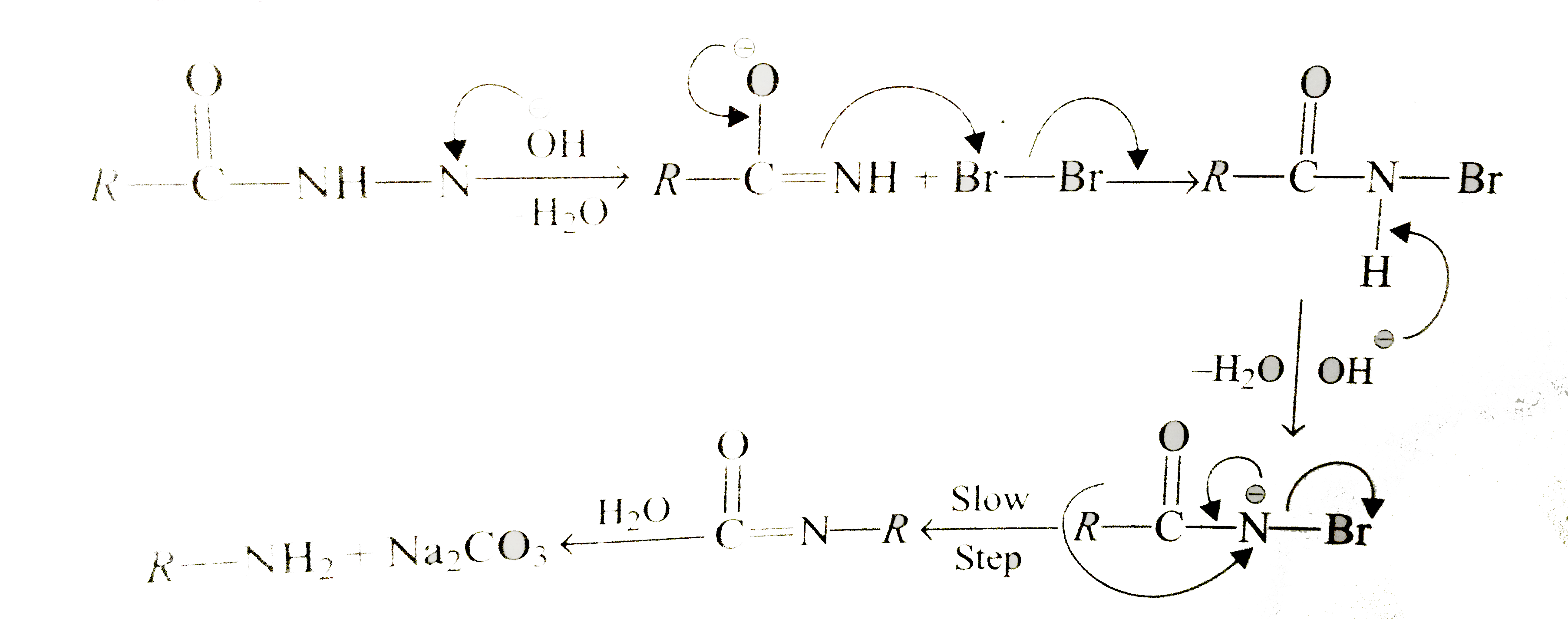In Hofmann bromamide degradation reaction
R−O||C−NH2+KOH+Br2→
intermediates are:
RCONHBr
RNCO
RNH2
none of these
The correct Answer is:A, B
Topper's Solved these Questions
- CABOXYLIC ACIDS AND ITS DERIVATIVESBOOK - HIMANSHU PANDEYCHAPTER - CABOXYLIC ACIDS AND ITS DERIVATIVESEXERCISE - More Than One Correct (Q.50 To Q.50)
1 Videos
- CABOXYLIC ACIDS AND ITS DERIVATIVESBOOK - HIMANSHU PANDEYCHAPTER - CABOXYLIC ACIDS AND ITS DERIVATIVESEXERCISE - Linked Comprehension Type (Q.1 To Q.25)
25 Videos
- CABOXYLIC ACIDS AND ITS DERIVATIVESBOOK - HIMANSHU PANDEYCHAPTER - CABOXYLIC ACIDS AND ITS DERIVATIVESEXERCISE - More Than One Correct (Q.1 To Q.25)
25 Videos
- BIOMOLECULESBOOK - HIMANSHU PANDEYCHAPTER - BIOMOLECULESEXERCISE - Match The Column
6 Videos
- CARBONYL COMPOUNDSBOOK - HIMANSHU PANDEYCHAPTER - CARBONYL COMPOUNDSEXERCISE - Subjective Type Problems
10 Videos
Similar Questions
Knowledge Check
In Hofmann bromamide degradation reaction
R−O∣∣C−NH2+KOH+Br2→
intermediates are:ARCONHBrBRNCOCRNH2Dnone of theseHofmann's bromamide degradation reaction is shown by
AArNH2BArCONH2CArNO2DArCH2NH2The intermediates formed during the reaction of R−O∣∣C−NH2 with Br2 and KOH are :
ARCONHBr and RNCOBRNHCOBr and RNCOCRNHBR and RCONHBrDRCONH2
The conversion of an amide by reaction NaOH and Br2 to primary amine that has one carbon than the strating amide is known as Hofmann-Bromoamide reaction.
R−O∣∣C−NH2Br2+NaOH−−−−−−−→orNaOBrR−NH2+NaBr+Na2CO3
Mechanism:

Number of moles of NaOH consumed in above reaction:
View SolutionThe conversion of an amide by reaction NaOH and Br2 to primary amine that has one carbon than the strating amide is known as Hofmann-Bromoamide reaction.
R−O∣∣C−NH2Br2+NaOH−−−−−−−→orNaOBrR−NH2+NaBr+Na2CO3
Mechanism:


View SolutionThe conversion of an amide by reaction NaOH and Br2 to primary amine that has one carbon than the strating amide is known as Hofmann-Bromoamide reaction.
R−O∣∣C−NH2Br2+NaOH−−−−−−−→orNaOBrR−NH2+NaBr+Na2CO3
Mechanism:


Find X and Y:
View SolutionR−O∣∣C−NH2NaNO2−−−−→HClA A is :
View SolutionWhich of the following is an intermediate formed in the reaction shown below
CH3−O∣∣C−CI+NH3→ Intermediate → product.
View Solution

_S01_491_Q01.png)